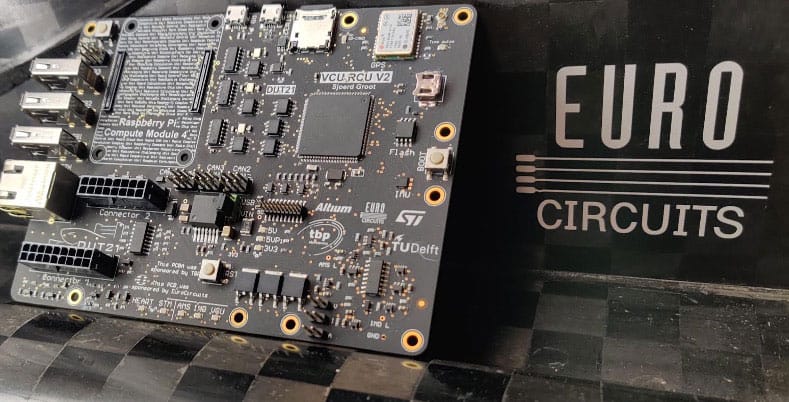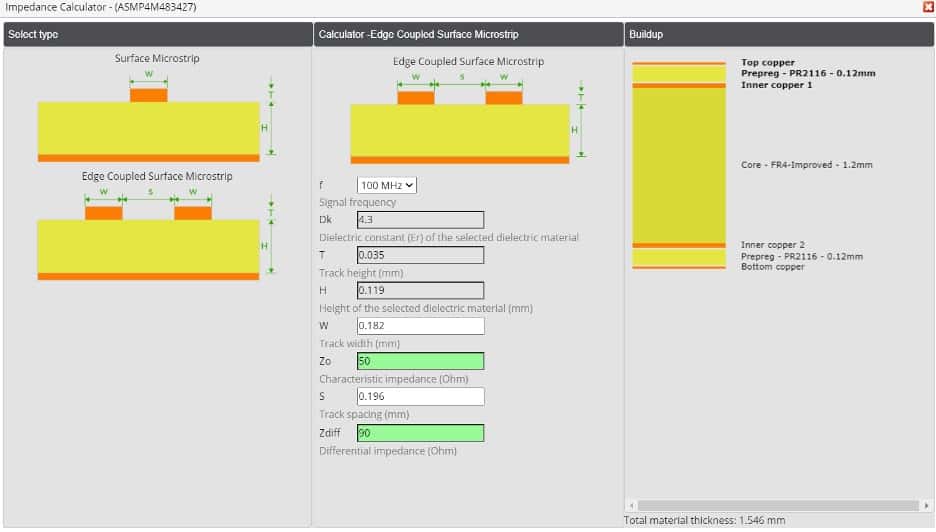Formula Student Team Delft – DUT 21
Building an electric Race Car
Formula Student Team Delft has been building race cars for over 21 years now, which have been electric for the past 10 years. With these race cars we compete at Formula Student competitions where student teams from around the world face off to see who has built the best car. Eurocircuits has been a long-term partner helping us to produce our own custom PCBs used throughout the car.
Improving our Data Acquisition
One of the focus points for the embedded electronics this year was to improve our data acquisition and telemetry. To do this we integrated a Raspberry Pi Compute Module (CM) on our VCU (Vehicle Control Unit). This came with quite some challenges, for example the requirements for the PCB manufacturing. The connector of the CM has a pitch of 0.4mm, which is way smaller than most traditional connectors. On top of that, we require a defined impedance for the high frequency signals like Ethernet and USB, more on that later.
The heart of our car is the VCU, which receives all sensor data from throughout the car and runs a control algorithm to determine how much power to send to each of the four motors. The CM is connected to all the communication buses (CAN in our case) to eavesdrop on all the data. On top of that, a high frequency SPI connection between the VCU and CM makes it possible to send more detailed information about the behaviour of the control system. The CM compresses the data, and streams it to the cloud over an LTE connection, all in real-time. This helped us save a massive amount of time in testing, since there was almost no downtime in between test runs.
Defined impedance
As mentioned, we use the Eurocircuits defined impedance pool to ensure we get a fast, reliable, and consistent performance from the Ethernet and USB connections. This is extra relevant for an electric (race) car, as it can be quite an electrically noisy environment with the high voltage tractive system in proximity. In the defined impedance pool, the distance between the copper layers will be reduced and specific impedance for tracks can be guaranteed. With the amount of data that we sent, it is crucial to get these impedances right, to minimize data loss and optimize bandwidth. The online PCB tools from Eurocircuits features an impedance calculator, making it easy to determine the right trace width and distance for the required impedance. In our case this was 100Ω differential pairs for Ethernet and 90Ω differential pairs for USB. We were able to get a good result with our VCU: we have had no performance issues with either USB or Ethernet!
For more information, please visit fsteamdelft.










